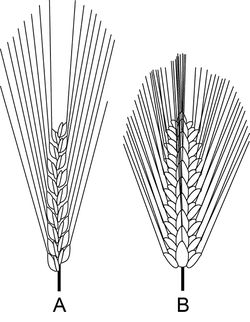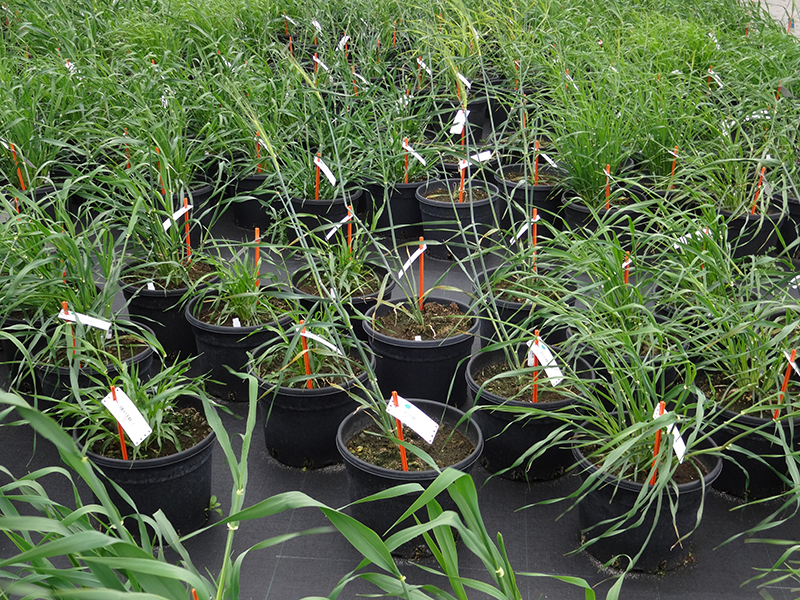Two or more rows per spike and shoot branching (tillering) control yield in barley
Improvement of crop yield is essential for agriculture to guarantee continued food supply in a time of changing environmental conditions, shortened water supplies and increasing consumer needs. These demands include affordable crops for food and feed produced with minimal amounts of fertilizers, pesticides, herbicides and fuel. To reach these goals, plant scientists and breeders work on the better understanding of important traits.
In cereals like wheat, rye and barley the crop yield is determined by the number and weight of seeds that can be harvested from these plants. Plant traits that are associated with yield include the number of seeds per spike and the number of side shoots (tillers) that carry spikes.
There are two ways in which the seeds on a barley spike can be arranged: in two or six rows. The barley spike is composed of alternating units which each carry three flowers. In two-rowed barley, the lateral flowers are sterile and only the middle one can be fertilized and set seed while in six-rowed barley all flowers do this. The spikes of wild barley are two-rowed, six-rowed spikes occurred during domestication. Apart from the two-rowed and six-rowed cultivars, there are also the so-called “intermedium” mutants which display an altered spike architecture but are neither two nor six-rowed.
Recently, we evaluated how changes in spike architecture are correlated with other yield components such as seed weight and tiller number (Liller et al.,2015). For this, we looked at plants that have altered spike architecture due to a change in one gene and compared them to plants without this gene change. We found that some alterations in spike architecture resulted in an increased seed number, while others reduced it– but all these changes reduced seed weight compared to normal seeds. In addition, the majority of plants with altered spike architecture had less tillers when compared to the two-rowed control plants. Based on the developmental stage at which the reduction in tiller number was observed two major groups could be defined: (1) those that are most different from the control because the plant does not have sufficient resources to sustain tiller outgrowth due to the increased number of seeds per spike; and (2) those that are different because the gene that changes the spike architecture most likely also has an effect on the initiation and/or outgrowth of tillers, because these genes affect both shoot and inflorescence branching. Taken together, this exemplifies that manipulation of different yield components for the improvement of crop yield is not straightforward and might not always lead to the desired result.
Understanding how genes that affect spike and shoot architecture are regulated and control downstream targets is essential to further improve yield by modifying these traits.
Within CEPLAS, we carry on with the identification and characterization of genes controlling important agronomic traits such as seed number per spike and tillering. We are using both wild and cultivated barley and material from mutant collections to explore natural diversity and unravel the relationship between traits also at the molecular level. This will provide insights into the mechanisms of plant development which are important for basic research and crop improvement.
Contribution by Wilma van Esse (Plant Genetics) and Corinna Liller (Plant Breeding and Genetics), MPIPZ
Planter’s Punch
Under the heading Planter’s Punch we present each month one special aspect of the CEPLAS research programme. All contributions are prepared by our young researchers.
Corresponding publications
Liller CB, Neuhaus R, von Korff M, Koornneef M, van Esse W (2015) Mutations in Barley Row Type Genes Have Pleiotropic Effects on Shoot Branching. PloS one 10(10):e0140246. [Abstract]

